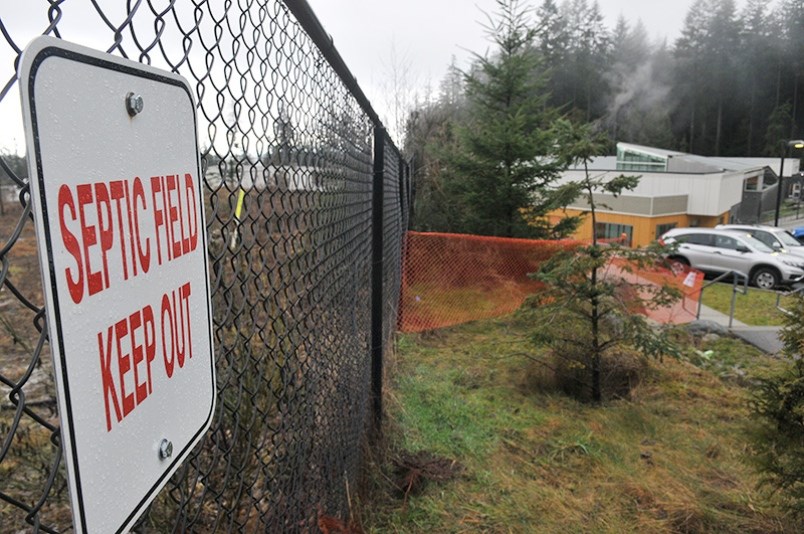School District 43 is waiting to hear about next steps for a resolution to a leaky septic field that has caused concern for students, parents and administrators at Eagle Mountain middle school.
“We are open and receptive to hear from Anmore Green Estates, Anmore and Port Moody as we work with the community,” said secretary treasurer Chris Nicolls.
His comment at Tuesday’s board of education meeting comes as a peer-reviewed engineering report concluded the best solution for resolving the contamination problem is tying the Anmore Green housing development to existing municipal sewer lines.
Nicolls acknowledged that if work was to be done, access to SD43 property would be necessary.
“We will wait and see,” Nicolls said, adding the district “remains vigilant” about effluent leaking onto school district property.
A hillside field behind Eagle Mountain middle school has been off limits behind blue steel fencing since Dec. 23 when it was erected to comply with a pollution-abatement order, which had been issued to Anmore Green Estates, following the detection of contaminated ground water at the base of the hill last September.
This latest report, which was prepared by CTQ Consultants Ltd. and peer reviewed by Jeffrey Oland of Oland Engineering Ltd., said the only solution that is socially, environmentally and financially sustainable is to tie the Anmore housing development into Port Moody’s sewer pipe about 60 metres away.
“This system is the standard of modern urban communities and is by far the most reliable method of sewage collection and treatment,” said the report’s author, Matt Cameron.
He said other possible solutions — including repairing the existing septic fields, creating a new mounded septic system, building an onsite sewage treatment system or just pumping the sewage into trucks to be hauled off site — have a high risk of failing again or would just be too expensive to implement. The report also dismissed the possibility of rebuilding the septic system to the standards under which they had been originally permitted when it was built in the 1990s (those standards were revised in 2012).
— with files from Mario Bartel



